- What is photosynthesis?
- Types of photosynthesis
- Photosynthesis characteristics
- Photosynthesis equation
- Phases of photosynthesis
- Importance of photosynthesis
We explain what photosynthesis is, its characteristics, equation and phases. Also, why it is important to the world's ecosystems.
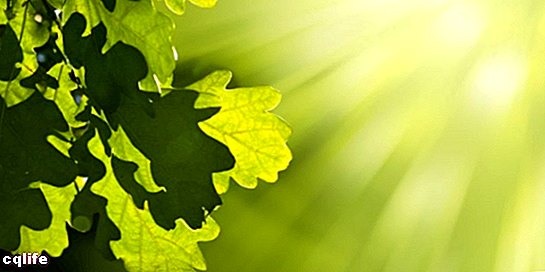
What is photosynthesis?
Photosynthesis is the biochemical process by which plants, algae and bacteria photosynthetic convert inorganic material (carbon dioxide and water) in organic material (sugars), taking advantage of Energy coming from the sunlight. This is the main mechanism of nutrition of all the autotrophic organisms that have chlorophyll, which is the essential pigment for the photosynthetic process.
Photosynthesis constitutes one of the most important biochemical mechanisms on the planet since it involves the manufacture of organic nutrients that store the light energy coming from Sun in different molecules useful (carbohydrates). In fact, the name of this process comes from the Greek voices Photo, "light and synthesis, "Composition".
After photosynthesis, the synthesized organic molecules can be used as a source of chemical energy to support vital processes, such as cellular respiration and other reactions that are part of the metabolism of the living beings.
To carry out photosynthesis, the presence of chlorophyll is required, a pigment that is sensitive to sunlight, which gives plants and algae their characteristic green coloration. This pigment is found in chloroplasts, cellular organelles of various sizes that are typical of the vegetables cells, especially the foliar cells (of the leaves). Chloroplasts contain a set of protein Y enzymes that allow the development of complex reactions that are part of the photosynthetic process.
The photosynthesis process is essential for the ecosystem and for the life as we know them, since it allows the creation and circulation of organic matter and the fixation of inorganic matter. In addition, during oxygenic photosynthesis, the oxygen that most living beings need for their production is produced. breathing.
Types of photosynthesis
Two types of photosynthesis can be distinguished, depending on the substances used by the body to carry out the reaction:
- Oxygenic photosynthesis. It is characterized by the use of Water (H2O) for the reduction of carbon dioxide (CO2) consumed. In this type of photosynthesis, not only are useful sugars produced for the body, but oxygen (O2) is also obtained as a product of the reaction. Plants, algae, and cyanobacteria carry out oxygenic photosynthesis.
- Anoxygenic photosynthesis. The body does not use water to reduce carbon dioxide (CO2), but instead uses sunlight to break down hydrogen sulfide (H2S) or hydrogen gas (H2) molecules. This type of photosynthesis does not produce oxygen (O2) and instead releases sulfur as a product of the reaction. Anoxygenic photosynthesis is carried out by the so-called green and purple sulfur bacteria, which contain photosynthetic pigments grouped under the name of bacteriochlorophylls, which are different from the chlorophyll of plants.
Photosynthesis characteristics
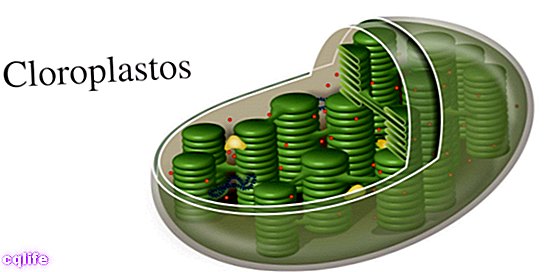
In plants and algae, photosynthesis takes place in organelles called chloroplasts.
Broadly speaking, photosynthesis is characterized by the following:
- It is a biochemical process of taking advantage of sunlight to obtain organic compounds, that is, the synthesis of nutrients from inorganic elements such as water (H2O) and carbon dioxide (CO2).
- It can be performed by various autotrophic organisms, as long as they have photosynthetic pigments (the most important is chlorophyll). It is the process of nutrition of plants (both terrestrial and aquatic), algae, phytoplankton, photosynthetic bacteria. Some few animals are capable of photosynthesis, including the sea slug Elysia chlorotica and the spotted salamander Ambystoma maculatum (the latter does it thanks to the symbiosis with a seaweed).
- In plants and algae, photosynthesis takes place in specialized organelles called chloroplasts, in which chlorophyll is found. Photosynthetic bacteria also possess chlorophyll (or other analogous pigments), but they do not have chloroplasts.
- There are two types of photosynthesis, depending on the substance used to fix the carbon from carbon dioxide (CO2). Oxygenic photosynthesis uses water (H2O) and produces oxygen (O2), which is released into the surrounding environment. Anoxygenic photosynthesis uses hydrogen sulfide (H2S) or hydrogen gas (H2), and does not produce oxygen but instead releases sulfur.
- Since Ancient Greece, the relationship between sunlight and plants was already postulated. However, advances in the study and understanding of photosynthesis began to gain importance thanks to the contributions of a successive set of scientists from the 18th, 19th and 20th centuries. For example, the first to demonstrate the generation of oxygen in plants was the English clergyman Joseph Priestley (1732-1804) and the first to formulate the basic equation of photosynthesis was the German botanist Ferdinand Sachs (1832-1897). Later, the biochemical American Melvin Calvin (1911-1997), made another enormous contribution, clarifying the Calvin cycle (one of the phases of photosynthesis), which earned him the Nobel Prize for Chemistry in 1961.
Photosynthesis equation
The general equation for oxygenic photosynthesis is as follows:

The correct way to formulate this equation chemically, that is, the balanced equation for this reaction, is as follows:
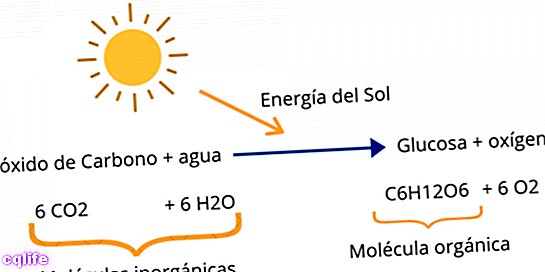
Phases of photosynthesis
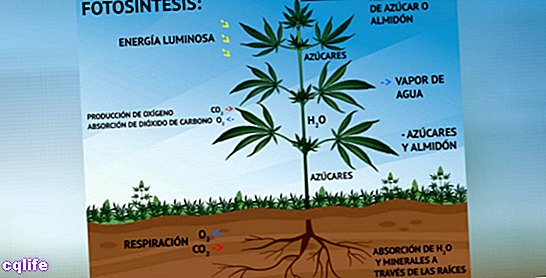
Photosynthesis as a chemical process occurs in two different stages: the light (or light) stage and the dark stage, so called because only the first is directly involved in the presence of sunlight (which does not mean that the second necessarily occurs in the dark ).
- Light or photochemical stage. During this phase, light-dependent reactions take place inside the plant, that is, the plant captures the solar energy by means of chlorophyll and uses it to produce ATP and NADPH. It all starts when the chlorophyll molecule comes into contact with solar radiation and electrons of its outer shells are excited, which generates an electron transport chain (similar to the electricity), which is used for the synthesis of ATP (adenosine triphosphate) and NADPH (nicotine adenine dinucleotide phosphate). The breakdown of a water molecule in a process called "photolysis" allows a chlorophyll molecule to regain the electron it lost when excited (the excitation of several chlorophyll molecules is required to carry out the light phase). As a result of the photolysis of two water molecules, an oxygen molecule is produced that is released to the atmosphere as a by-product of this phase of photosynthesis.
- Dark or synthetic stage. During this phase, which takes place in the matrix or stroma of the chloroplasts, the plant uses carbon dioxide and takes advantage of the molecules generated during the previous stage (chemical energy) to synthesize substances organic substances through a circuit of highly complex chemical reactions known as the Calvin-Benson cycle. During this cycle, and through the intervention of different enzymes, previously formed ATP and NADPH, glucose is synthesized from carbon dioxide that the plant takes from the atmosphere. The incorporation of carbon dioxide in compounds organic is known as carbon fixation.
Importance of photosynthesis
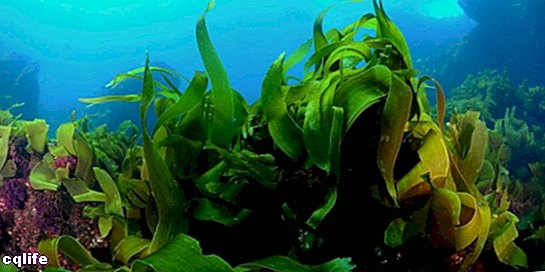
Photosynthesis is a vital and central process in the biosphere for multiple reasons. The first and most obvious is that it produces oxygen (O2), an essential gas for respiration both in water and in water. air. Without plants, most living things (including the human being) they simply couldn't survive.
On the other hand, by absorbing it from the surrounding environment, plants fix carbon dioxide (CO2), converting it into organic matter. This gas, which we exhale when we breathe, is potentially toxic if it is not kept within certain limits.
Because plants use carbon dioxide to make their own food, the decrease in plant life on the planet affects the increase of this gas in the atmosphere, where it functions as an agent of global warming. For example, CO2 acts as a gas of greenhouse effect, preventing excess heat that reaches the Earth radiates out of the atmosphere. It is estimated that each year photosynthetic organisms fix as organic substances around 100,000 million tons of carbon.
